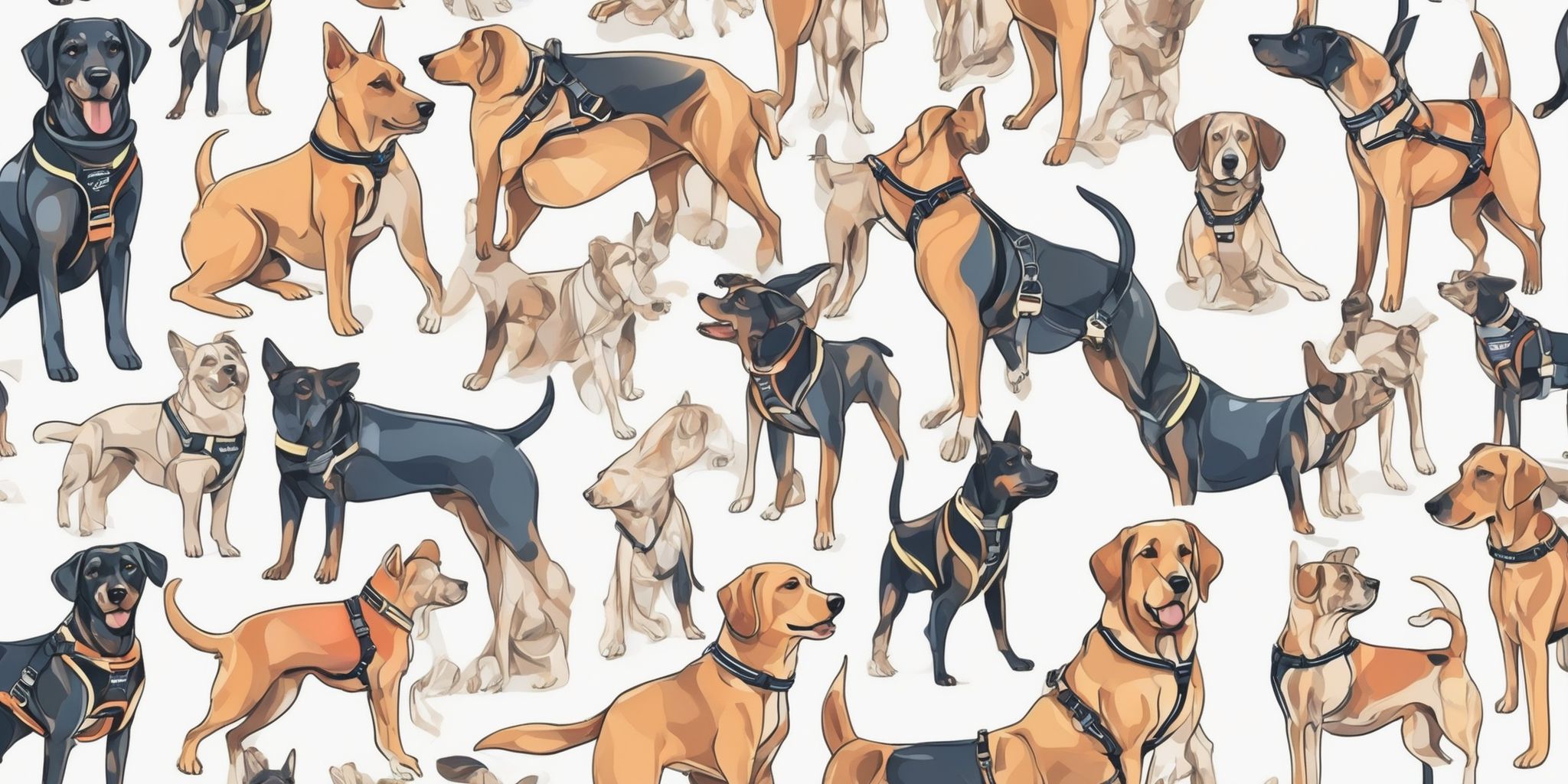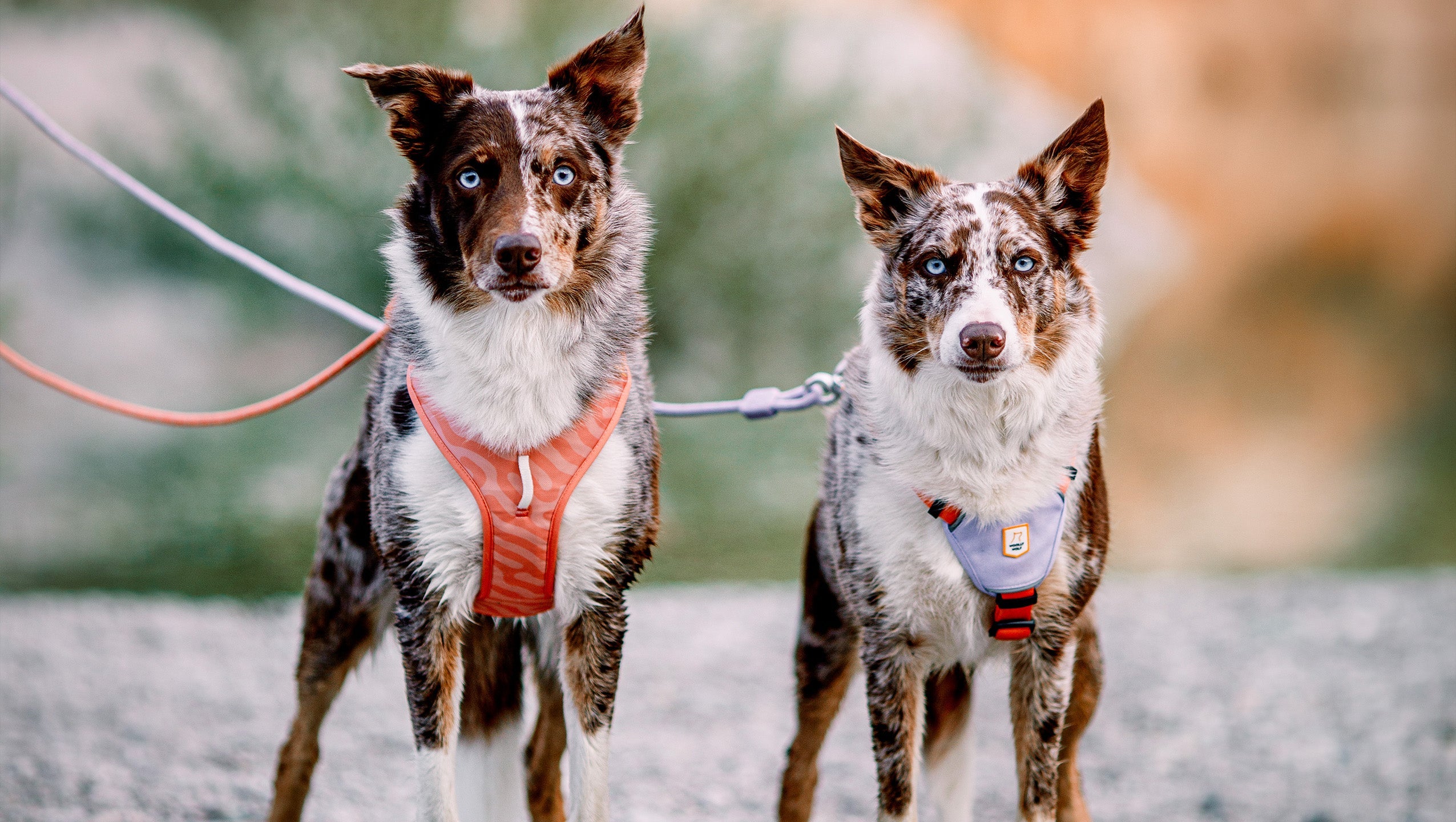Sekä kokeneille koiranomistajille että uusille lemmikin vanhemmille sopivan valjaan löytäminen koiralle voi olla tehtävä, joka vaatii huolellista harkintaa. Lukuisat vaihtoehdot voivat tehdä prosessista haastavan. Sopivan valjaan valitseminen on kuitenkin välttämätöntä koirasi mukavuuden ja turvallisuuden kannalta ulkoilussa. Tämä artikkeli opastaa sinut eri tekijöiden läpi, jotta voit tehdä tietoisen ja tehokkaan valinnan karvaiselle ystävällesi.
Koiravaljaiden edut
Koiravaljaat tarjoavat monia etuja koirille ja heidän omistajilleen. Ne antavat paremman hallinnan koirista ulkoilun ja koulutuksen aikana, auttaen omistajia ohjaamaan lemmikkejään pois mahdollisista vaaroista. Lisäksi ne varmistavat vetopaineen tasaisen jakautumisen, vähentäen rasitusta kurkussa ja niskassa, mikä on erityisen hyödyllistä koirille, joilla on hengitysongelmia tai roduille, jotka ovat alttiita niskavammoille.
Joissain valjaissa on myös lisäominaisuuksia kuten heijastinraitoja tai kahvoja parempaa otetta varten, varmistaen turvallisemmat yökävelyt tai hätätilanteet.
Huomioitavat tekijät koiravaljaita valittaessa
Muutama keskeinen näkökohta tulee huomioida valjaita valittaessa.
Ensinnäkin, valjaiden istuvuus on elintärkeää koirasi mukavuuden ja turvallisuuden kannalta. Hihnat, joita voi helposti säätää koirasi koon mukaan, mahdollistavat optimaalisen istuvuuden. Lisäksi valjaissa käytetyn materiaalin tulisi olla kestävää, kuten nailonia tai nahkaa, varmistaen pitkäikäisyyden. Tarkista myös käyttäjäystävällinen muotoilu, joka helpottaa pukemista ja riisumista. Lopuksi, lisäominaisuudet kuten heijastinnauhat tai kahvakiinnitykset voivat parantaa näkyvyyttä ja tarjota lisähallintaa tarvittaessa.
Koiravaljaiden tyypit
Etuklipsivaljaat
Koiranomistajien suuresti suosimat etuklipsivaljaat tunnetaan tehokkuudestaan koiran hallinnassa lenkkeillessä. Toisin kuin perinteiset valjaat, joissa klipsi on selässä, näissä valjaissa kiinnityspiste on rinnassa. Tämä auttaa ehkäisemään vetämistä ja edistää parempia kävelytapoja. Ne ovat erityisen hyödyllisiä koirille, jotka vetävät tai ryntäilevät paljon. Kouluttajat ja käyttäytymisasiantuntijat suosittelevat näitä usein työkaluna hyvien hihnakävelytapojen edistämiseen.
Ne voivat olla hyödyllisiä myös koirille, joilla on hengitysongelmia, koska ne vähentävät painetta niskassa.
Selkäklipsivaljaat
Selkäklipsivaljaissa hihna kiinnittyy koiran selkään. Muotoilu antaa paremman hallinnan koiran liikkeistä kävelyn aikana, sillä hihnan kiinnityskohta on lähempänä painopistettä. Se ehkäisee hihnasta vetämistä, koska paine kohdistuu koiran rintaan niskan sijaan. Se voi olla hyödyllinen koirille, joilla on taipumusta hengitysongelmiin tai henkitorven vaurioihin, sillä hihnan aiheuttama jännite jakautuu koiran koko kehoon, vähentäen näin rasitusta niskassa ja kurkussa.
Vedonestovaljaat
Vedonestovaljaat on suunniteltu ehkäisemään koirien vetämistä hihnassa, ja ne jakavat voiman koiran koko kehoon, tehden kävelyistä miellyttävämpiä. Ne tarjoavat paremman hallinnan koiran liikkeistä, helpottaen huomion uudelleen suuntaamista kävelyjen aikana. Ne vähentävät merkittävästi rasitusta omistajan käsivarsissa ja hartioissa, edistäen parempaa hihnakäyttäytymistä.
Koiravaljaiden säätäminen ja pukeminen
Mittaaminen ja oikean koon valinta
Oikean kokoisten valjaiden valinta koirallesi on ensiarvoisen tärkeää mukavuuden ja turvallisuuden kannalta. Oikeat mitat varmistavat helpon liikkumisen ja estävät epämukavuuden. Koiran rintakehän ympärys heti etujalkojen takaa voidaan mitata tarkasti pehmeällä mittanauhalla. Kokoa valitessa tulee huomioida sekä koiran paino että rotu. Näiden tekijöiden huolellinen arviointi auttaa löytämään täydellisen istuvuuden lemmikillesi.
Oikeat säädöt mukavuutta varten
Koiravaljaiden oikea säätäminen vaikuttaa optimaaliseen mukavuuteen. Kunnolla kiinnitetyt hihnat varmistavat, että valjaat istuvat napakasti ja turvallisesti, vähentäen hankausta. Valjaat eivät saa olla liian löysät eivätkä liian tiukat. Oikeat säädöt estävät tarpeettoman paineen rintakehässä tai niskassa, antaen koirasi hengittää mukavasti.
Vaiheittainen opas koiravaljaiden pukemiseen
Aseta valjaat tasaisesti maahan ja varmista, että hihnat eivät ole sekaisin. Pue ne koiran pään yli, asettaen D-rengas selkään. Pujota koiran jalat oikeisiin aukkoihin ja säädä hihnat napakasti. Kiinnitä soljet paikoilleen ja tarkista vielä valjaiden napakkuus. Näitä vaiheita noudattamalla koirasi on mukavasti valjaissa ja valmis lähtemään hetkessä.
Yhteenveto
Sopivien valjaiden valinta koirallesi vaatii huolellista harkintaa. Koiravaljaat ovat arvokas työkalu koiran käyttäytymisen hallinnassa ulkona. Huomioi tekijät kuten koiran koko, rotu, erityistarpeet, valjaiden käyttötarkoitus, kestävyys ja mukavuus. Perusteellinen tutkimus voi merkittävästi parantaa koirasi turvallisuutta, mukavuutta ja hyvinvointia.






